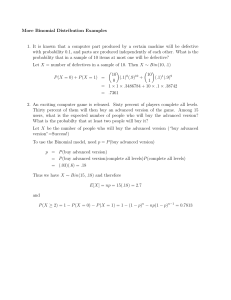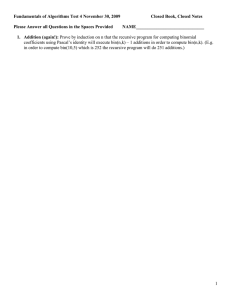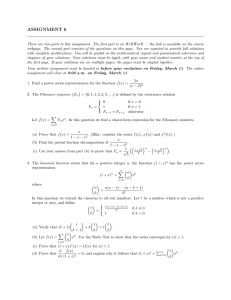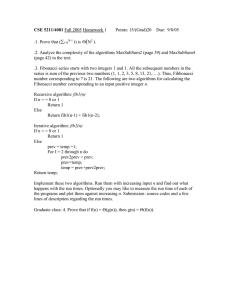Fundamentals of Algorithms Fall 2010 HW 4 1.
advertisement
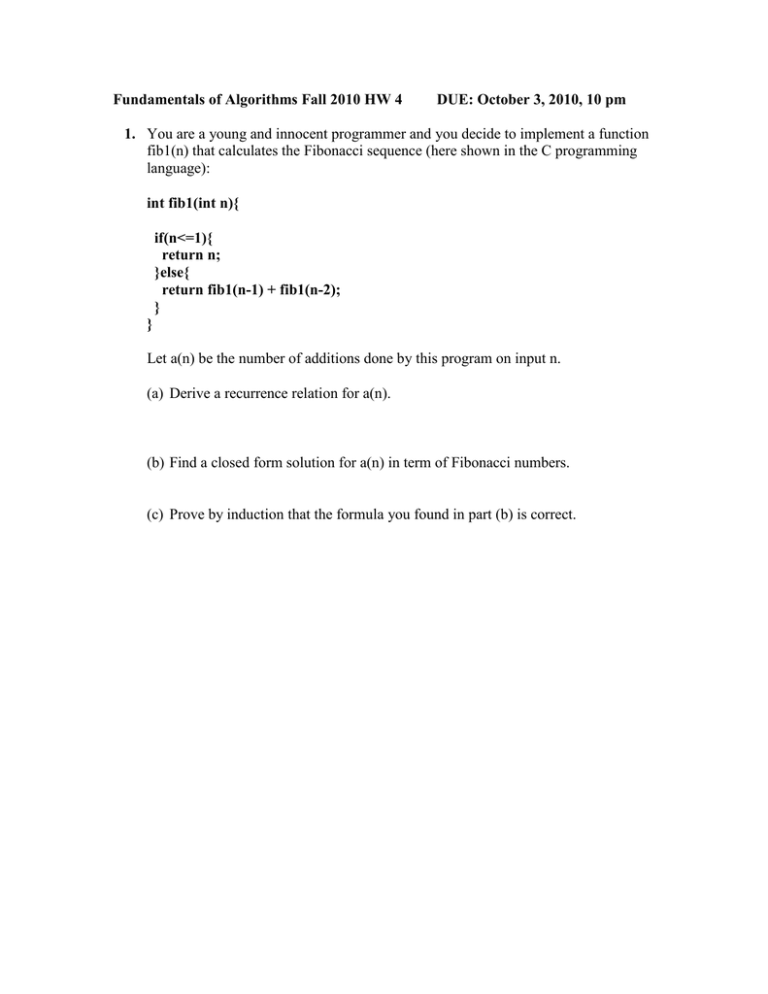
Fundamentals of Algorithms Fall 2010 HW 4
DUE: October 3, 2010, 10 pm
1. You are a young and innocent programmer and you decide to implement a function
fib1(n) that calculates the Fibonacci sequence (here shown in the C programming
language):
int fib1(int n){
if(n<=1){
return n;
}else{
return fib1(n-1) + fib1(n-2);
}
}
Let a(n) be the number of additions done by this program on input n.
(a) Derive a recurrence relation for a(n).
(b) Find a closed form solution for a(n) in term of Fibonacci numbers.
(c) Prove by induction that the formula you found in part (b) is correct.
2. Fibonacci Formula:
It turns out that the nth Fibonacci number can be expressed in closed form as
f(n) = (φn – (1-φ)n)/√5, where φ = (1 + √5)/2
Prove that this is true by induction.
3. Nchoosek: Consider the following recursive code for computing binomial
coefficients written in the Matlab programming language:
function result=bin1(n,k)
if(k==0 || n==k)
result=1;
else
result = bin1(n-1,k-1) + bin1(n-1,k);
end
(a) Prove that 2(n choose k) -1 function calls will be made if you call bin1(n,k)
Now consider the following Dynamic Programming code for the same
problem (also written in Matlab):
function res=bin2(n,k)
B=zeros(n+1,k+1);
for i=1:(n+1)
for j=1:(min(i,k+1))
if(j==1 || j==i)
B(i,j)=1;
else
B(i,j) = B(i-1,j-1) + B(i-1,j);
end
end
end
res = B(n+1,k+1);
(b) Prove that the inner loop will be executed k(k+1)/2 + (n-k+1)(k+1) times
If you call bin2(n,k)
4. Addition (again!): Prove by induction on n that the recursive program for
computing binomial coefficients will execute bin(n,k) – 1 additions in order to
compute bin(n,k). (E.g. in order to compute bin(10,5) which is 252 the recursive
program will do 251 additions.)
5. Prove that bin(n,k) = bin(n-1,k-1) + bin(n-1,k) where bin(n,k) is a binomial
coefficient.
6. Use the Longest Common Subsequence Dynamic Programming Algorithm to find
the LCS of ABABCCDABABDC and ABCDAABCACABC.
